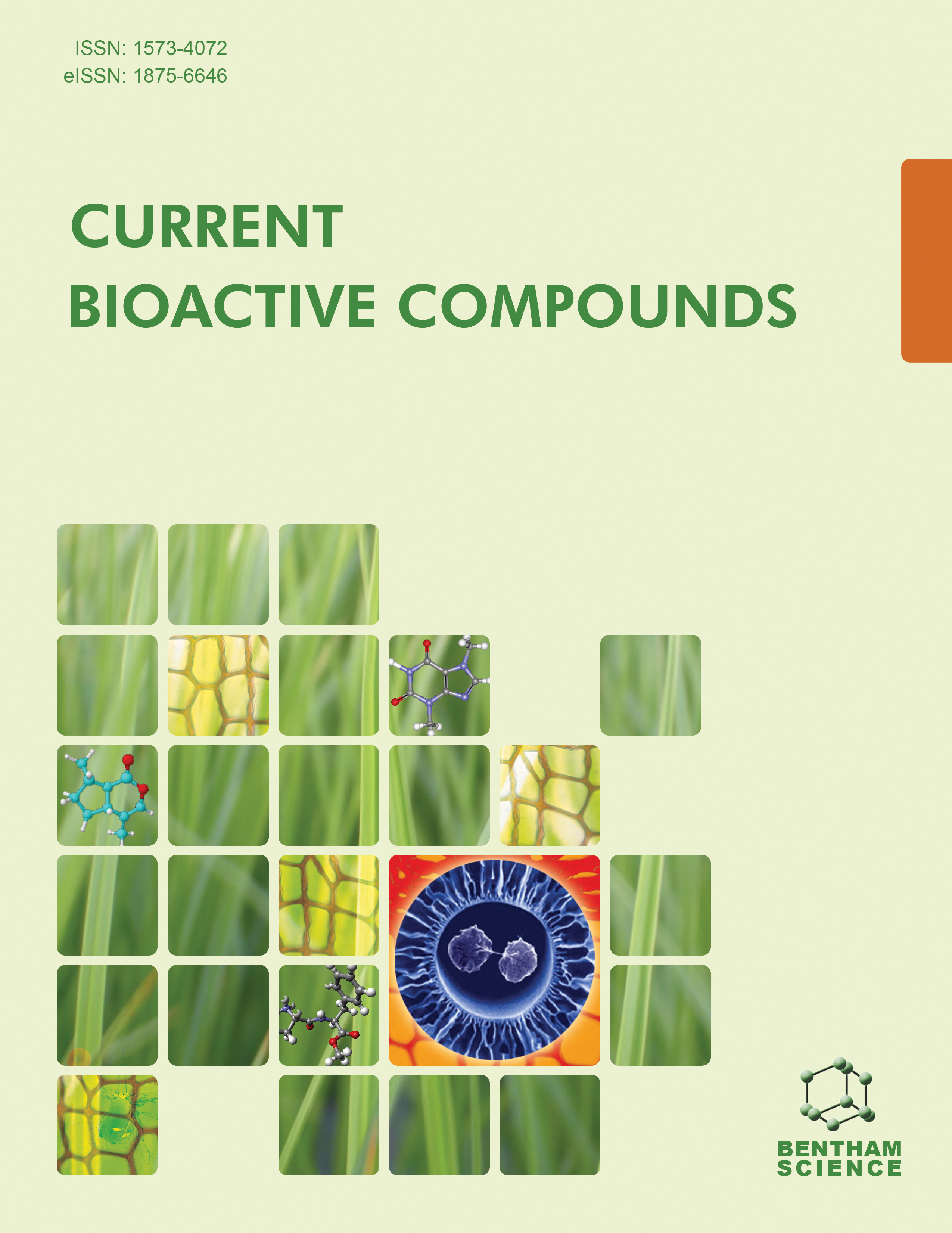- Home
- A-Z Publications
- Current Bioactive Compounds
- Previous Issues
- Volume 12, Issue 3, 2016
Current Bioactive Compounds - Volume 12, Issue 3, 2016
Volume 12, Issue 3, 2016
-
-
Synthetic Strategies to Serine-Proline Chimeras: An Overview
More LessThis review focuses on synthetic strategies developed to obtain serine-proline chimeras. The conformational properties of proline, combined with functional groups typical of aminoacid side chains, represent an interesting approach to stabilize peptide secondary structures such as β-turns. Different chemical pathways to synthesize 3-, 4-, and 5-hydroxyprolines, considered proline chimeras of aminoacid serine, will be presen Read More
-
-
-
A Review of Strategies for the Development of Alkyl Prolines in Drug Discovery
More LessAuthors: Alessandra Tolomelli, Alessandra Ammazzalorso, Isabella Bruno and Rosa AmorosoAmong all natural α-amino acids, proline represents a singularity. Due to the presence of the pyrrolidine ring, proline includes a secondary amino group, that does not contain a hydrogen atom when involved in an amide bond. A variety of synthetic analogues have been developed in the last years, based on ring substitutions, incorporation of heteroatoms into the ring, expansion or contraction of the pyrrolidine ring. The prese Read More
-
-
-
Novel Synthetic Strategies for the Development of Tryptophan-Proline Chimeras, Useful Tool for Drug Discovery
More LessThe de novo design of peptides and proteins represents an innovative tool in the early stage of drug research. Over the last thirty years, many studies have been undertaken to develop new strategies of design and synthesis of peptides with specific conformations. Substituted amino acids exhibit significant biological activity, and play an important role in medicinal chemistry. Proline chimeras in particular, are valuable tools Read More
-
-
-
Synthetic Approach to Phenylalanine-Proline, and Tyrosine-Proline Hybrid Amino Acids
More LessAuthors: Marialuigia Fantacuzzi, Letizia Giampietro and Marilena CrescenteSubstituted proline derivatives represent an important class of conformationally constrained amino acids. The combination of the structural properties of proline and the side-chain of another amino acid could help the development of peptidomimetics and SAR study of active compounds. The presence of a phenyl or a p-hydroxy-phenyl ring on the pyrrolidine ring could be considered as phenylalanine- or thyrosine-proline h Read More
-
-
-
Synthetic Methodologies for the Preparation of Arginine-Proline Derivatives
More LessAuthors: Cristina Maccallini, Mauro Di Matteo, Mariem Chayah and M. Encarnación CamachoProline derivatives bearing arginine side chain elicit great interest both in medicinal and biological chemistry, due to the combination of unique proline conformational properties with the important role played by the arginine polar side chain in protein molecular recognition. This review focuses on synthetic methodologies to obtain 3- and 4-substituted arginine-proline derivatives, which are useful compounds both as buil Read More
-
-
-
Synthetic Strategies for Lysine-Proline Chimeras: An Overview
More LessAuthors: Letizia Giampietro, Rosa Amoroso and Marco ChiariniProline-amino acid chimeras are conformationally rigid amino acid analogues, important in understanding the spatial requirements for receptor affinity and biological activity of natural amino acids and peptides. In medicinal chemistry, a great variety of lysine-proline chimeras was considered in light of the importance of their biological roles. In this review, we analyze the most relevant synthetic approaches to obtain lysine-prol Read More
-
-
-
Cysteine-, Methionine- and Seleno-Cysteine-Proline Chimeras: Synthesis and Their Use in Peptidomimetics Design
More LessNatural sulphurated amino acids are cysteine and methionine. Their importance in biological processes is largely known. Cysteine, plays a key role due to the thiol group, which represents a nucleophilic and easily oxidizable function. Synthetic methodologies to obtain Cysteine-, Methionineand Seleno-Cysteine-Proline chimeras are strongly desirable and particularly appealing in the field of organic chemistry.
-
-
-
Novel Synthetic Approaches for the Synthesis of Alanine-Proline Chimeras
More LessIn this review, we reported on the Proline-chimeras characterized by resembling the skeleton of Alanine (Alanine-Proline chimeras). The synthetic approaches were classified according to the position of the methyl group on the pyrrolidine ring. Moreover, the synthesis of pyroglutamic acid derivatives will be discussed due to its importance as building block and chiral pool in the asymmetric synthesis of numerous bioactive c Read More
-
-
-
Threonine-Proline-Chimeras, A Valuable Building Block for Peptidomimetic Design: A Review
More LessAuthors: Adriano Mollica and Gokhan ZenginThreonine-proline chimeras are not so abundant in nature as the other proine-chimeras and their functionalization is also restricted to the third position on the pyrrolidine ring. Despite these aspects the synthetic procedures adopted to obtain these products are straightforward and well-described in literature, as reported in the following review.
-
Volumes & issues
-
Volume 21 (2025)
-
Volume 20 (2024)
-
Volume 19 (2023)
-
Volume 18 (2022)
-
Volume 17 (2021)
-
Volume 16 (2020)
-
Volume 15 (2019)
-
Volume 14 (2018)
-
Volume 13 (2017)
-
Volume 12 (2016)
-
Volume 11 (2015)
-
Volume 10 (2014)
-
Volume 9 (2013)
-
Volume 8 (2012)
-
Volume 7 (2011)
-
Volume 6 (2010)
-
Volume 5 (2009)
-
Volume 4 (2008)
-
Volume 3 (2007)
-
Volume 2 (2006)
-
Volume 1 (2005)
Most Read This Month
Article
content/journals/cbc
Journal
10
5
false
en

Most Cited Most Cited RSS feed
-
-
Podophyllotoxin: Current Perspectives
Authors: Ying Qian Liu, Liu Yang and Xuan Tian
-
- More Less

